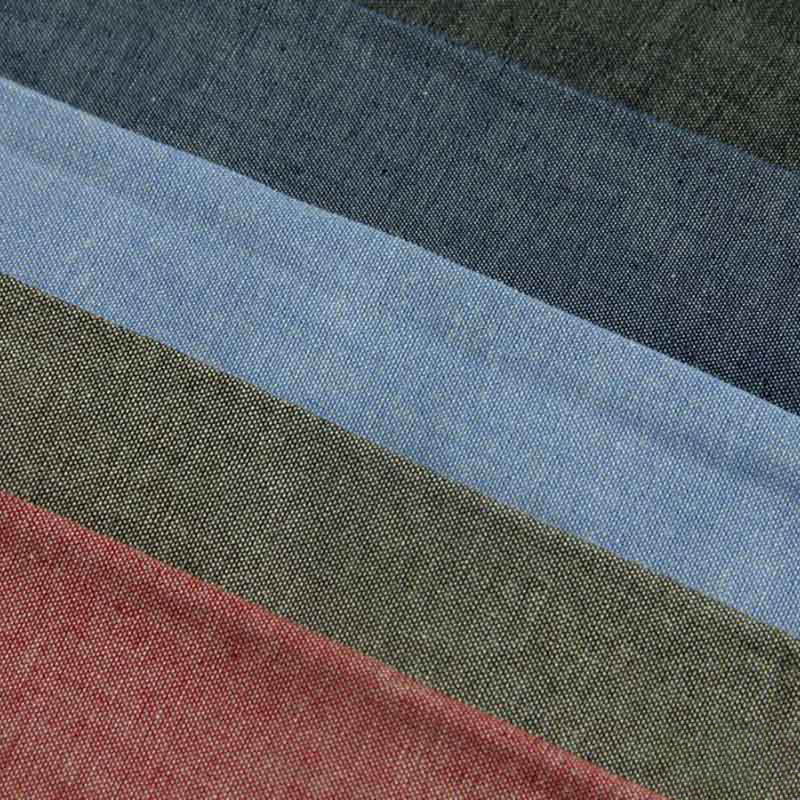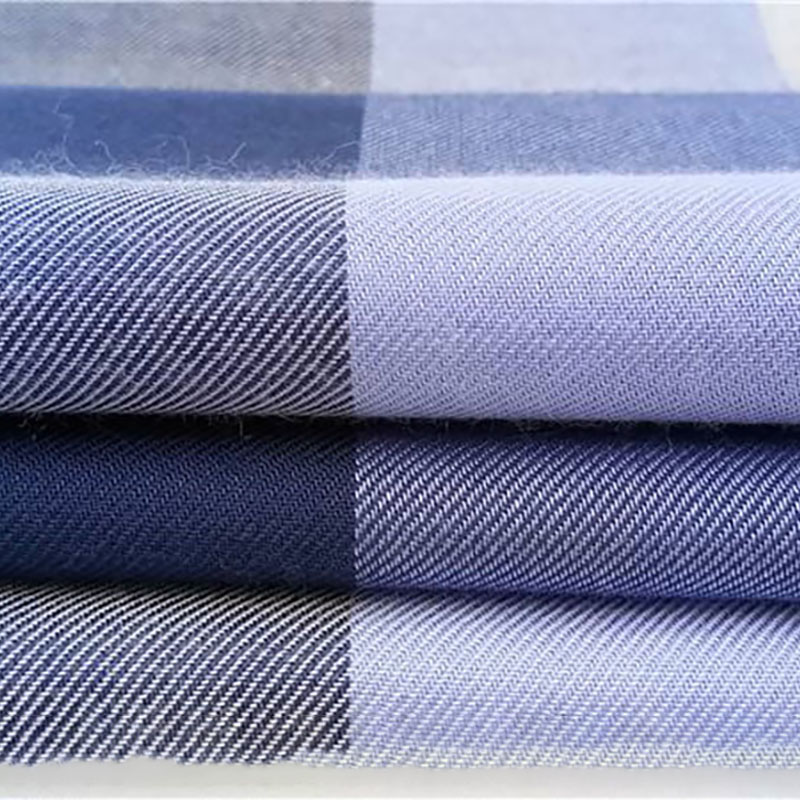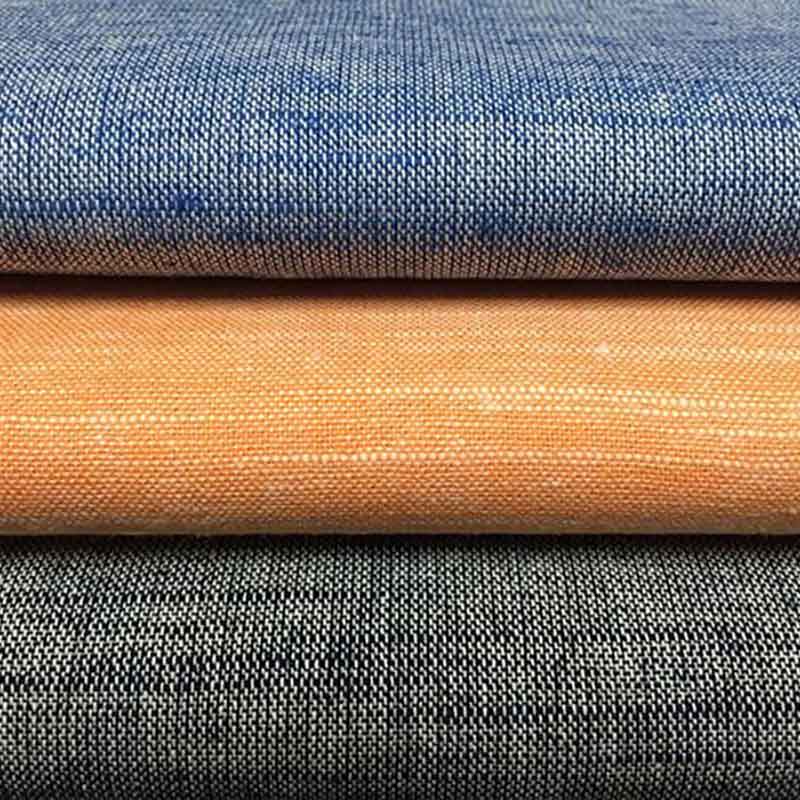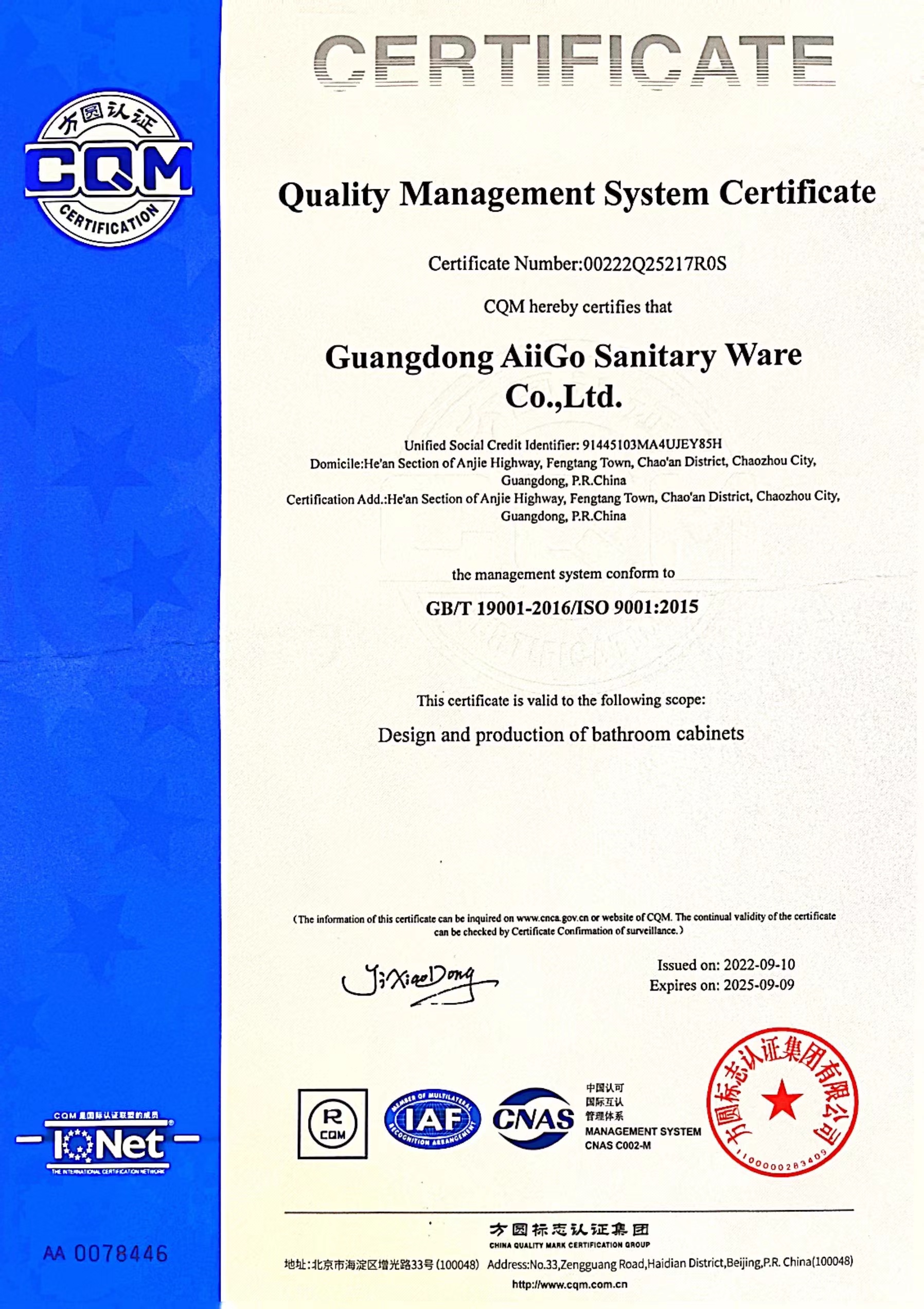Product Details
Product Introduction
Yarn-dyed chambray is a synthetic fabric made of a blend of dyed and bleached yarns, with cotton as the main raw material, and traditionally used to make work clothes for young people. This fabric became popular after World War II, and the early light blue youth work shirts of the US Navy greatly promoted its popularity. Yarn-dyed chambray mainly uses darker warp or weft threads interwoven with white weft or warp threads, presenting medium and light tones, and the fabric is smooth and soft, making it an economical and affordable material for daily clothing. Compared with denim, yarn-dyed chambray is lighter and more breathable, and is not easy to produce a heavy feeling. It has a wide range of uses, including shirts, casual clothes, and work clothes. In recent years, with the advancement of cloth-making technology, the styles, yarn combinations and color designs of yarn-dyed chambray have become more diverse, and the range of items that can be made has expanded to shoes, hats and tablecloths. Its simple style and simple lines present a youthful atmosphere, which is particularly suitable for fabrics composed of 45% cotton, 35% linen and 20% polyester, and is used to make light clothing such as shirts, jackets and cardigans.

Advantages and features
1. Lightweight and breathable: Compared with traditional denim, Qianjun yarn-dyed youth fabric is lighter and more breathable, suitable for wearing in different climate conditions.
2. Comfortable and soft: Made of high-quality cotton fiber and advanced weaving technology, the fabric is smooth, soft and comfortable to wear.
3. Diversified designs: Rich blends of colored yarn and bleached yarn, combined with a variety of yarn combinations and color designs, to meet various fashion needs.
4. Economical: As a daily clothing material, Qianjun yarn-dyed youth fabric is both high quality and economical, suitable for the mass market.
5. Environmentally friendly and sustainable: Using environmentally friendly materials of 45% cotton, 35% linen and 20% polyester, focusing on reducing the impact on the environment.
Application Scenario
1. Casual wear: This includes light clothing such as shirts, jackets and cardigans.
2. Work clothes: suitable for young people and various industries to make work clothes.
3. Home accessories: such as materials for tablecloths, shoes and hats.
















.jpg?x-oss-process=image/resize,m_fill,h_300,w_300/format,webp)
.jpg?x-oss-process=image/resize,m_fill,h_300,w_300/format,webp)
.jpg?x-oss-process=image/resize,m_fill,h_300,w_300/format,webp)
.jpg?x-oss-process=image/resize,m_fill,h_300,w_300/format,webp)
.jpg?x-oss-process=image/resize,m_fill,h_300,w_300/format,webp)
.jpg?x-oss-process=image/resize,m_fill,h_300,w_300/format,webp)


.jpg?x-oss-process=image/resize,m_fill,h_300,w_300/format,webp)









